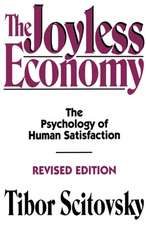The Arts of Transitional Justice: Culture, Activism, and Memory after Atrocity: Springer Series in Transitional Justice, cartea 6
Editat de Peter D. Rush, Olivera Simićen Limba Engleză Hardback – 25 sep 2013
| Toate formatele și edițiile | Preț | Express |
|---|---|---|
| Paperback (1) | 636.63 lei 6-8 săpt. | |
| Springer – 23 aug 2016 | 636.63 lei 6-8 săpt. | |
| Hardback (1) | 640.88 lei 6-8 săpt. | |
| Springer – 25 sep 2013 | 640.88 lei 6-8 săpt. |
Preț: 640.88 lei
Preț vechi: 753.97 lei
-15% Nou
Puncte Express: 961
Preț estimativ în valută:
122.64€ • 127.32$ • 102.27£
122.64€ • 127.32$ • 102.27£
Carte tipărită la comandă
Livrare economică 24 martie-07 aprilie
Preluare comenzi: 021 569.72.76
Specificații
ISBN-13: 9781461483847
ISBN-10: 1461483840
Pagini: 216
Ilustrații: XVIII, 198 p. 10 illus. in color.
Dimensiuni: 155 x 235 x 22 mm
Greutate: 0.43 kg
Ediția:2014
Editura: Springer
Colecția Springer
Seria Springer Series in Transitional Justice
Locul publicării:New York, NY, United States
ISBN-10: 1461483840
Pagini: 216
Ilustrații: XVIII, 198 p. 10 illus. in color.
Dimensiuni: 155 x 235 x 22 mm
Greutate: 0.43 kg
Ediția:2014
Editura: Springer
Colecția Springer
Seria Springer Series in Transitional Justice
Locul publicării:New York, NY, United States
Public țintă
ResearchCuprins
The Demands of Art in Transitional Justice Processes.- Dispersed Memories: Diaspora, Reconciliation and Healing.- Activism, Public Debate and TemporalComplexities in Fighting for Transitional Justice in Serbia.- AestheticApproaches to Justice: Addressing Jedwabne.- Theatre and Justice: A GrassrootsApproach to Transitional Justice in Afghanistan.- You are allowed (to be alive!) How art cangive permission.- The Visions of Literary Justice for Survivors of Srebrenica:Examining the Fictional Narratives of Srebrenica Genocide in Light of theInsights from Transitional Justice.- Frames of Genocide: Between performativity and aesthetics, memorials andarchives in the Transitional Justice Process in Rwanda.- The Artistic Imaginaryand Transitional Justice in Northern Ireland.- The Staging of History inCambodia.- On the Transformation of Wounds: Pictures as an engine of justice.- Memorial Culture in the former Yugoslavia: TheMothers of Srebenica and the destruction of artefacts by the ICTY.- The pluraljurisdictions of transitional aesthetics: bearing witness in liminal spaces.
Textul de pe ultima copertă
The re-assesment of transitional justice as both an institutional craft and a system of knowledge has been ongoing for sometime now. The Arts of Transitional Justice: Culture, Activism and Memory After Atrocity contributes to this revaluation by focusing on the prevalence of art and aesthetic practices in the various domains and institutions of transitional justice.
Interdisciplinary in approach, this volume provides personal and intellectual contributions by literary and cultural critics, legal scholars, artists and activists as well as policy experts. It ranges across theatre, public art installations, literary fiction and public protest, poems and film, photography, museums, monuments and body art. How are these cultural performances used in the practices of transitional justice? What can and do they tell us about the discourses of transitional justice, and their representations of the cultural and social transformations of post-conflict societies? How do they provide provide a forum and idiom through which survivors of atrocity can have their voices heard, can tell their story, as well as evaluate and reflect on the transitional justice mechanisms in their society?
This volume seeks to understand the significant and plural role that artists, works of art and more broadly aesthetic performances have played in societies in transition. Among the topics covered are:
Interdisciplinary in approach, this volume provides personal and intellectual contributions by literary and cultural critics, legal scholars, artists and activists as well as policy experts. It ranges across theatre, public art installations, literary fiction and public protest, poems and film, photography, museums, monuments and body art. How are these cultural performances used in the practices of transitional justice? What can and do they tell us about the discourses of transitional justice, and their representations of the cultural and social transformations of post-conflict societies? How do they provide provide a forum and idiom through which survivors of atrocity can have their voices heard, can tell their story, as well as evaluate and reflect on the transitional justice mechanisms in their society?
This volume seeks to understand the significant and plural role that artists, works of art and more broadly aesthetic performances have played in societies in transition. Among the topics covered are:
- Cultural intervention and the imagination of peace and transition
- Education, photography and fictional narratives after Genocide
- Memory, performance and trauma
- Public protest, public art and cities in transformation
- The role of theatre in healing in Afghanistan, Serbia and beyond
- Diasporic communities and the artefacts of lives recalled
- The reception of artworks by survivors of atrocity
- The dilemmas of transitional justice scholarship and the feeling for justice
Caracteristici
Examines the relationship between transitional justice and the practice of art Collaborative work between scholars, civil society groups, and artists Interdisciplinary focus on the central themes of transitional justice
























